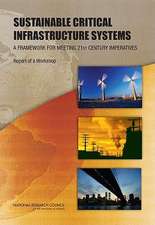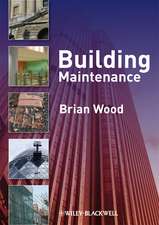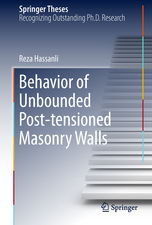Developing Disaster Resilient Housing in Vietnam: Challenges and Solutions
Autor Tuan Anh Tranen Limba Engleză Hardback – 6 ian 2016
The design and development of disaster resilient housing has been framed into three main themes:
(i) community consultation, (ii) the role of built-environment professionals and (iii) design responses for resilience.
To achieve these themes, there is a variety of contextual and intervening conditions that need to be addressed and met to provide an enabling environment for promoting disaster resilient housing. These three themes are among the most arguable issues in recent debates and discussions, academicallyand practically, regarding disaster risk reduction and safe housing development. In addition, this book also provides the evidence-based design framework for disaster resilient housing upon which design ideas and solutions for safe and resilient housing can be generated and shaped.
| Toate formatele și edițiile | Preț | Express |
|---|---|---|
| Paperback (1) | 556.58 lei 38-44 zile | |
| Springer International Publishing – 30 mar 2018 | 556.58 lei 38-44 zile | |
| Hardback (1) | 649.06 lei 22-36 zile | |
| Springer International Publishing – 6 ian 2016 | 649.06 lei 22-36 zile |
Preț: 649.06 lei
Preț vechi: 763.60 lei
-15% Nou
Puncte Express: 974
Preț estimativ în valută:
124.19€ • 130.02$ • 102.77£
124.19€ • 130.02$ • 102.77£
Carte disponibilă
Livrare economică 17-31 martie
Preluare comenzi: 021 569.72.76
Specificații
ISBN-13: 9783319267418
ISBN-10: 3319267418
Pagini: 245
Ilustrații: XXIV, 245 p. 94 illus., 23 illus. in color.
Dimensiuni: 155 x 235 x 20 mm
Greutate: 0.66 kg
Ediția:1st ed. 2016
Editura: Springer International Publishing
Colecția Springer
Locul publicării:Cham, Switzerland
ISBN-10: 3319267418
Pagini: 245
Ilustrații: XXIV, 245 p. 94 illus., 23 illus. in color.
Dimensiuni: 155 x 235 x 20 mm
Greutate: 0.66 kg
Ediția:1st ed. 2016
Editura: Springer International Publishing
Colecția Springer
Locul publicării:Cham, Switzerland
Public țintă
ResearchCuprins
1. Introduction.- 2. A Review of Contemporary Literature in the Field of Disaster-Resilient Housing.- 3. Latin America.- 4. Fieldwork Implementation and Case Studies Overview.- 5. Community Participation, Consultation and Communication.- 6. The Role of Built-Environment Professionals in Building Resilience for Housing.- 7. Design Responses for Disaster-Resilient Housing.- 8. Design Framework for Disaster-Resilient Housing.- 9. Conclusion.
Textul de pe ultima copertă
This book provides a comprehensive understanding on disaster resilient housing within the Vietnam context particularly and the developing world generally. The book has identified the root causes of housing vulnerability, restrictions to safe housing development, concepts of disaster resilient housing, key issues/factors implementers and building designers need to consider, and ways of achieving resilient housing outcomes in actual design projects.
The design and development of disaster resilient housing has been framed into three main themes:
(i) community consultation, (ii) the role of built-environment professionals and (iii) design responses for resilience.
To achieve these themes, there is a variety of contextual and intervening conditions that need to be addressed and met to provide an enabling environment for promoting disaster resilient housing. These three themes are among the most arguable issues in recent debates and discussions, academically and practically, regarding disaster risk reduction and safe housing development. In addition, this book also provides the evidence-based design framework for disaster resilient housing upon which design ideas and solutions for safe and resilient housing can be generated and shaped.
The design and development of disaster resilient housing has been framed into three main themes:
(i) community consultation, (ii) the role of built-environment professionals and (iii) design responses for resilience.
To achieve these themes, there is a variety of contextual and intervening conditions that need to be addressed and met to provide an enabling environment for promoting disaster resilient housing. These three themes are among the most arguable issues in recent debates and discussions, academically and practically, regarding disaster risk reduction and safe housing development. In addition, this book also provides the evidence-based design framework for disaster resilient housing upon which design ideas and solutions for safe and resilient housing can be generated and shaped.
Caracteristici
Provides evidence-based design framework for disaster resilience housing Identifies the root causes of housing vulnerability Addresses a variety of contextual and intervening conditions to provide an enabling environment for promoting disaster resilient housing


















